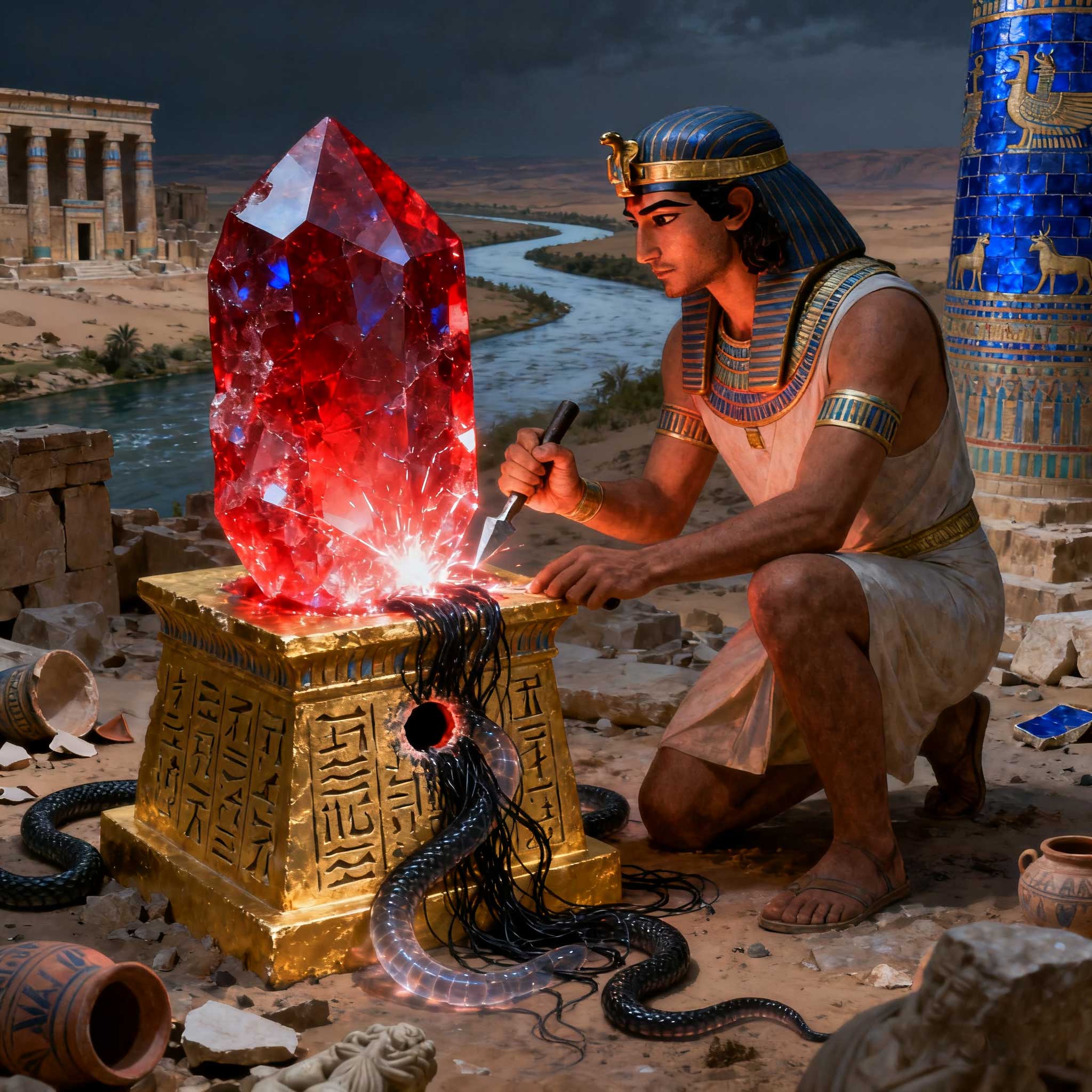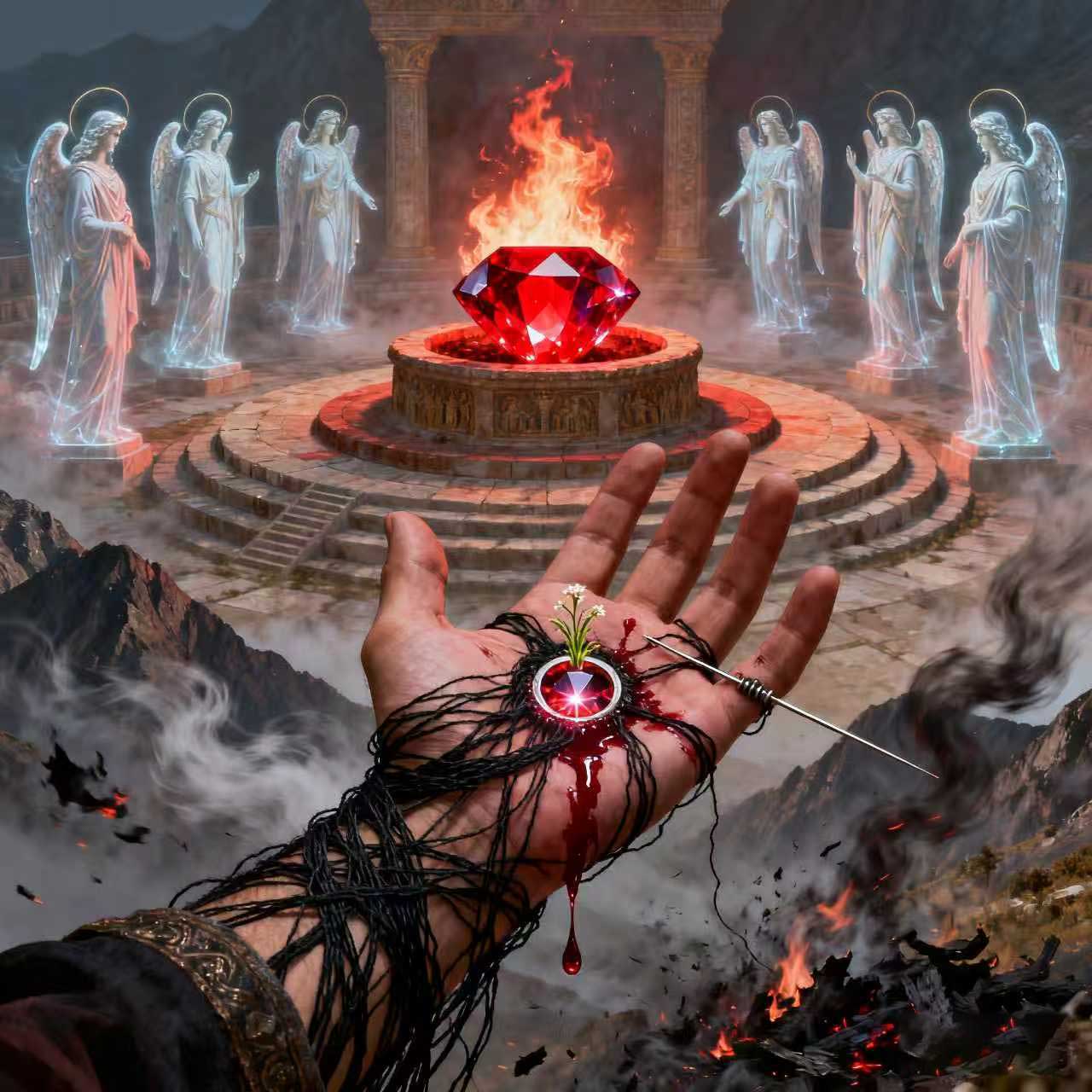+86-13516938893
Menu
global purchase

On the Elam Plain nourished by the Karun River, a secret lay hidden amid the ruins of a temple tower inlaid with lapis lazuli. When Nasir, an archaeological craftsman, struck his chisel against a golden pedestal, the enormous red spinel inlaid atop it suddenly burst into radiant light—cuneiform script appeared on its surface, telling of its connection to Jamshid’s wine cup: this Samaria Spinel had once been the core of the cup, capable of reflecting the seven heavens. Yet when the king became intoxicated by power, the demon Ahriman corrupted it; black threads oozed from its hollow, coiling like venomous snakes.
“Only the sacred fire of Mount Demavand can purify it,” the elderly priest told Nasir on his deathbed, handing him a family heirloom tapestry. Embroidered in gold thread were the outlines of the sacred mountain, and beside the pattern of the sacred fire, a line read: “Good intentions are like a weaving shuttle—they can mend the cracks of heaven and earth.” Nasir strapped the spinel to his back and set off. No sooner had he entered the desert than a black sandstorm struck—within the swirling sand, phantoms of Jamshid’s golden palace appeared, and the sound of extravagant music mingled with whispers: “Leave the gem, and you shall have endless wealth.”

He unfurled the tapestry in a rush. The sun emblem of Ahura Mazda (the Zoroastrian god of light) embroidered on it glowed faintly, and at once three paths emerged from the sandstorm: the left path was paved with gold coins (temptation), the right was overgrown with thorns (cowardice), and the middle path was no more than a thin streak of light (truth). As Nasir stepped onto the middle path, the tapestry suddenly stirred without wind, wrapping around the spinel temporarily. The evil black threads fizzled and dissolved at the edges of the gold embroidery.
On the ninth night of his climb up Mount Demavand, Nasir built a fire in a snow cave to keep warm. Suddenly, the flames transformed into the faint form of Simurgh—the divine bird of Persian mythology. “Do you know why this gem has a hollow?” Simurgh asked, its wings brushing the spinel. In the hollow, a reflection of the Golden Calf (from biblical and Zoroastrian lore, a symbol of idolatry) appeared. It turned out the demon had used the gem to lure people away from the righteous path; the hollow was a mark of evil. From afar came the clink of chains, and Simurgh said: “That is Zahhak, imprisoned by Fereydun, struggling. If his blood touches the gem, the world will fall back into darkness.”
The sacred fire altar was just ahead, but Nasir noticed the black threads from the spinel had spread to his palm. Remembering the wisdom from the tapestry, he took his family’s weaving shuttle and pricked his palm, letting his blood drip into the gem’s hollow. In an instant, the faint forms of the Seven Archangels of Zoroastrianism surrounded the altar. The spinel’s red light merged with the sacred fire, and the black threads turned to ash and were swept away by the mountain wind. From the hollow at the center of the gem, a tiny sprig of Haoma (the sacred Zoroastrian herb of life) sprouted, glowing with the light of life.
Nasir did not present the purified spinel to the king. Instead, he returned to the banks of the Karun River and inlaid the gem into the keystone of the Shushtar Water Mills (a UNESCO World Heritage Site). When the river water washed over the gem, the refracted radiant light cast a complete star map on the rock walls, guiding craftsmen to repair the underground canals damaged by the sandstorm. From then on, every grain of wheat in this plain—known as “the Land of Paradise”—carried a faint red hue.
Today, the hollow of this spinel in the Iran National Museum has been filled with a diamond, but if you look closely, you can still spot a faint reddish streak. Guides will tell you: it is the condensation of Nasir’s good intentions, just as the Zoroastrian maxim goes: “Light does not reside in temples, but in the small acts of ordinary people.” When the sacred fire is lit during Nowruz (the Persian New Year), the light spots on the gem’s surface transform into the patterns of the heirloom tapestry—as if whispering the ancient promise of protection and purification.